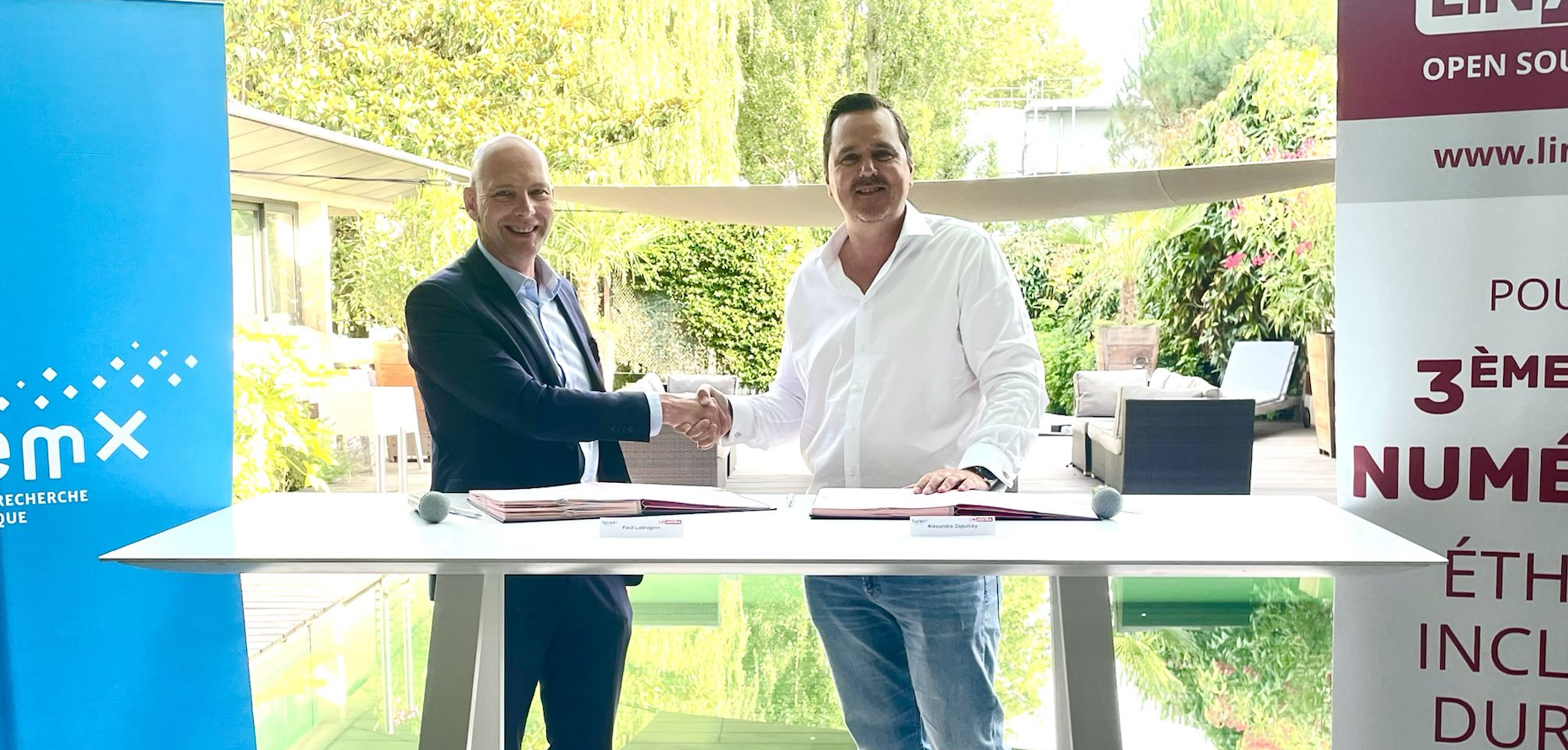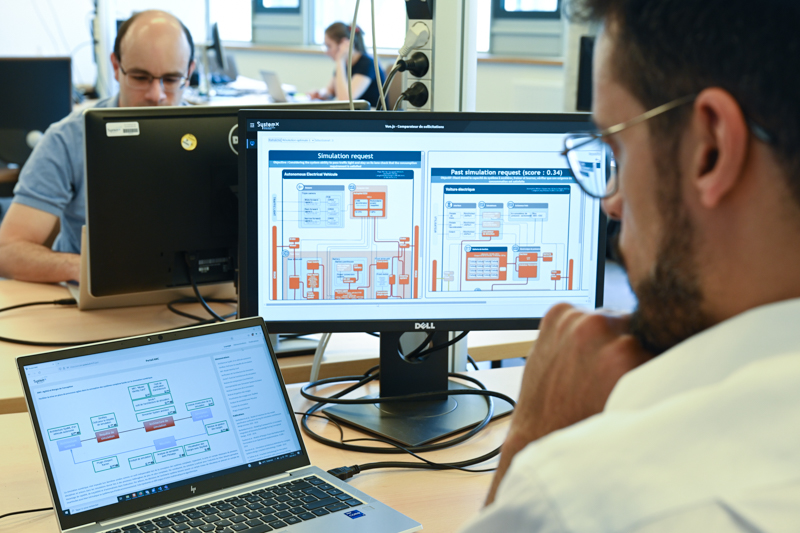Blockchain, broadcast and democratized by the Bitcoin application, is 2016’s new revolution in Internet of Trust. Beyond the buzz, what is the best way to discover this new vein from which to mine applications, and move from the dream world to the real world?
Blockchain: still just a Buzz word?
We are betting that blockchain will be the digital word of the year 201[1], after “Uberizing” in 2015 and “Selfies” in 2014. An increasing number of people today are talking about the Blockchain as they did about the Internet in the early years.
According to Sandrine Duchêne, the Secretary General at AXA France, “The blockchain will serve financial transactions as the Internet did information”[2].
What the blockchain promises – because today it is still just a promise – is nothing less than a sea change in the notion of trustworthy third parties, using digital technology and the law of the greatest number, what some call the power of the multitude[3]. Not only does the blockchain appear to have the power radically to change traditional economic models that have been entrenched for decades, even centuries, like deeds for instance, but it can also upset very recent economic models that are already at breaking point : thus some people say that the blockchain can out Uber [4].
In the view of the Harvard Business Review, the blockchain is one of the eight major technological trends to follow in 2016, in the same way as quantic informatics or Bots[5].
Nicolas Cary, the co-founder of Blockchain.info[6] asserts “I remain convinced that the blockchain technology will be as important to the world as Gutenberg’s printing press. For the first time in world history we can re-invent the way in which we carry out transactions with no intermediary whatsoever”.
John Cage, of Sun Microsystems, asserted in 1996 that “the network is the computer”[7]; when will we be able to say “the blockchain is the trustworthy third party”?
Why do we need the blockchain?
As a technology that allows distributed automatic transactions the blockchain may well replace our way of doing business, the relationships between suppliers, clients and subcontractors, by placing trust at the center, not least with Smart Contracts[8]. It is here that we realize that legal issues are as important as the technological and scientific aspects of the blockchain.
Some of the applications envisaged for the blockchain include financial transactions, cross-border transactions or money transfers (with an experiement already under way at Barclay’s Bank), centralized clearing, proof of authenticity, proof of discovery or invention, data management, conformity, peer-to-peer transactions, mortgages, loans, financing, crowdfunding, IoT, machine to machine communication, digital rights and personal identity management, recording, public documents, voting, health, real estate, games, logistics, mobility, energy, etc.
The meeting between IoT and the blockchain especially foreshadows a revolution: it will result in BoT: Blockchain of Things, with things which will communicate with each other autonomously and trustingly, and carry out transactions like autonomous economic players.
The blockchain will bring solutions for economic activities needing cooperation, collaboration and certification. Of course, the collaborative economy immediately springs to mind. It is no surprise to observe that one of the leading blockchain startups offers ride sharing with no centralized platform: Zooz[9].
Blockchain technologies, in short, provide a distributed architecture that addresses the weaknesses (security, safety, availability etc.) and constraints (costs) of trustworthy third parties that are inherent in centralized architectures, while at the same time fostering ethical use of data in the service of new innovative uses of the economy of the 21st century.
There is no doubt the blockchain is a very promising tool. How can it be used swiftly and efficiently?
How to get onto the blockchain?
A report published by the British Government Office for Science in early 2016[10] suggests, among other recommendations:
- Experiments and investments in R&D, in the field, to get past the Hype and the Buzz and get to grips with the technology by deploying transversal skills such as in sociology, law etc.
- Work on regulations that will need to be applied in the future.
- Work on standards, interoperability and breaking the templates.
In other words, to understand the interest of the blockchain and benefit from it soon, the best solution is to plunge in and start work on R&D in particular, lots of experiments, and be ready to learn from experience in real conditions (not to say live conditions). In all probability there will not be a new “killer application” for the blockchain, all supposing Bitcoin can be considered as such. There will probably be a host of new applications and usages, benefiting from increased trust due to the blockchain technologies, which will lead to their distribution and rise to maturity.
What is innovative with the blockchain is the very clever juxtaposition of existing technologies (like cipher technology) which enables greater trust to be placed in the famous “register” and consensus algorithm mechanisms via direct reference to game theory. Mathematical skills are precious here, as are those in software engineering.
The usages that might rely on the blockchain, like for instance the new connected vehicle services, will raise “system” challenges for which complex systems engineering skills will also be necessary, as well as skill in manipulating data, networks and IT infrastructures.
The blockchain is advancing at speed. Billions of dollars have already been invested in it in the US, compared to very few in Europe, including France; To catch up, we need to adopt new R&D approaches, in which a consistent base of scientific research underlies technological development and experimenting in the field, with very close collaboration between these activities.
Therefore, let us try to make a few recommendations for action so that we can get involved quickly and effectively:
- Start with usage cases, identify them by job, and work at freeing them from the relevant technological and scientific constraints.
- Adopt a swift, iterative approach based on proof of concept in the laboratory and experiments and pilots in the field.
- Combine technical and social science approaches: legal, economic models etc.
- Make use of the testing and assessment capacities for our own usage cases, for impartial examination of the various solutions in the market.
- Welcome the appropriate startups in these approaches.
- Rely on public-private partnerships in order to work together on usages and adjustments.
This is the way forward chosen by IRT SystemX, the Institute for technological research co-funded by the Programme d’investissements d’avenir (PIA, investments for the future), specialized in digital engineering of complex systems, and located in the heart of Campus Paris-Saclay, alongside the Université Paris-Saclay. An initial integrative and partenarial R&D project has been launched by the IRT, bringing together several companies that will provide usage cases and skills, and are anxious to share their efforts and progress in this breakthrough innovation. The team will also include academic researchers from Université Paris-Saclay and the researchers of the IRT, who will supply their scientific and technological research results in the areas required.
The project also aims to share good practices and enable crossovers in technological advances between the various applications of the blockchain such as mobility, logistics, energy, telecommunications, security and so on.
Innovation in this field will also be boosted by IRT SystemX’s development of an experimental platform that will enable coupling of blockchain technologies via innovative usage cases.
Finally, this project will use precise R&D actions to make short time studies that are directly operational so that strategic ideas can be developed and decisional aid tools can be supplied to political, economic and government players.
France cannot and does not wish to miss the blockchain revolution. It can even become a leader in this field, given its industrial and scientific clout. IRT SystemX intends to contribute via its R&S work and technological platforms.
The blockchain is not just another digital gadget. The blockchain, or rather its technologies, has the potential to change our societies and economies radically, just as TCP/IP did in the early nineties. Today, 25 years later, we can see that potential. So let us meet again in 2040, in a world where the blockchain is omnipresent – or even sooner, perhaps?
[2] Blockchain colloquium, French National Assembly, March 2016
[3] L’ère numérique, un nouvel âge de l’humanité, Le Passeur, 2014, by Gilles Babinet
[4]The word “Ubériser” entered the French dictionary in May 2016, 2017 edition of Petit Robert, which added 150 new words.
[5]8 Tech Trends to Watch in 2016 – https://hbr.org/2015/12/8-tech-trends-to-watch-in-2016
[6] https://blockchain.info/
[7] https://www.wired.com/1996/12/esgage/
[8] Autonomous programs that, once started, automatically execute conditions defined beforehand : Smart Contracts : definition and applications – Blockchain France https://blockchainfrance.net/2016/01/28/applications-smart-contracts/
[9] http://lazooz.net/
[10] Distributed Ledger Technology: beyond blockchain : https://www.gov.uk/government/uploads/system/uploads/attachment_data/file/492972/gs-16-1-distributed-ledger-technology.pdf
SOURCE
Article published in Revue TELECOM 183 “Drones: where will we end up with them? Blockchain: the new digital revolution?”
The author
 François Stephan is Deputy CEO in charge of Development and International affairs at IRT SystemX, which works on digital systems engineering.
François Stephan is Deputy CEO in charge of Development and International affairs at IRT SystemX, which works on digital systems engineering.
A graduate of the prestigious École polytechnique and Télécom ParisTech engineering schools, he has over 20 years professional experience in IT. With Jean-Pierre Briffaut he co-authored “Cloud Computing: Technological Evolution, a Revolution in Usage” published in May 2013 by Hermes Science – Lavoisier.



